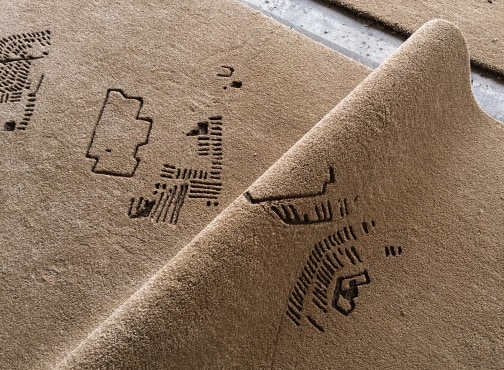
The exhibition uses contemporary perspectives to shed light on the fate of artworks and artefacts amidst looting, removal and restitution. The spectrum of works ranges from an exploration of colonial looting and in some cases dubious collecting activities, state-organised art theft and expropriation in the Third Reich, to cultural genocide through the removal and destruction of cultural treasures.
Systematic art theft is a phenomenon familiar since ancient times. It is not only a strategy for transferring objects of value, but also a means of legitimising cultural dominance. Often, it is only the more spectacular cases, such as those involving a high monetary value, that attract public attention. The focus of this exhibition deliberately concentrates on the immaterial value of objects, the memories, history and stories that have been inscribed in them: the dignity of the object and the societies that have lost these objects that shape their identity.
The artists featured in the exhibition provide inspiration for new strategies on how museums and collections can deal with this burdened heritage in order that they might fulfill their responsibility between restitution and the preservation of our cultural heritage.
----
Destroy your house, build up a boat, save life
Hera Büyüktaşcıyan
With the spatial installation Destroy your house, build up a boat, save life* , artist Hera Büyüktaşcıyan revolves around notions of departure, foundations and contested histories vocalized through physical and imaginary landscapes merged within one another.
The title of the work is a quotation taken from the “Story of the Flood” found on “The Epic of Atrahasis,” in a Babylonian cuneiform tablet within the British Museum. According to the inscription, the God Enlil -Ruler of the Earth, plans to destroy mankind through a devastating flood. Yet, God Enki -Ruler of Water, warns Atra-Hasis by instructing him to build a boat to be protected from rising waters. The description of this imaginary boat, also known as “Noah’s Ark,” becomes a departure point for Istanbul born artist, to reflect upon uncanny grounds in connection to land and roots, loss and perseverance, past and future. The boat acts as a metaphor for the rescue of belongings, as well as a source where fragments of memory are transferred from one context to another through a traumatic upheaval, exile and other forms of societal breakdown. Büyüktaşçıyan resonates with the notion of unknown futures and the unrooted foundations through this epic story, by appropriating a ceiling painting of a suggestive landscape, originally made for the domestic dwellings of the Siniossoglou Apartment** in Istanbul. The local area, then known commonly as Pera where the building is located, was witness to a massive, forced exodus of minority populations in the mid-20th century. The sudden departure of the original dwellers of the building after the 1955 pogrom , remains as a layer of ruptures evoked by the installation. The installation consists of a structure formed by rolled carpets, bearing a decomposed image of an unknown landscape, invoking both the act of a sudden departure as well as the carpet as a foundational element of belonging and a surface that recollects the trajectory of our own record of time and traces.
* This piece was originally commissioned by SALT Beyoglu in Istanbul, 2015.
** Siniossoglou Apartment, building is currently functioning as SALT Beyoglu.
----
The invisible enemy should not exist
Michael Rakowitz
The invisible enemy should not exist unfolds as an intricate narrative about the artifacts stolen from the National Museum of Iraq, Baghdad, in the aftermath of the US invasion of April 2003; the current status of their whereabouts; and the series of events surrounding the invasion, the plundering and related protagonists. The centerpiece of the project is an ongoing series of sculptures that represent an attempt to reconstruct the looted archeological artifacts.
Alluding to the implied invisibility of the museum artifacts (initial reports about their looting were inflated due to the “fog of war,” stated Museum officials), the reconstructions are made from the packaging of Middle Eastern foodstuffs and local Arabic newspapers, moments of cultural visibility found in cities across the United States. The objects are created by a team of assistants using the University of Chicago’s Oriental Institute database, as well as information posted on Interpol’s website. This project is an ongoing commitment to recuperate the 7,000+ objects that remain missing.